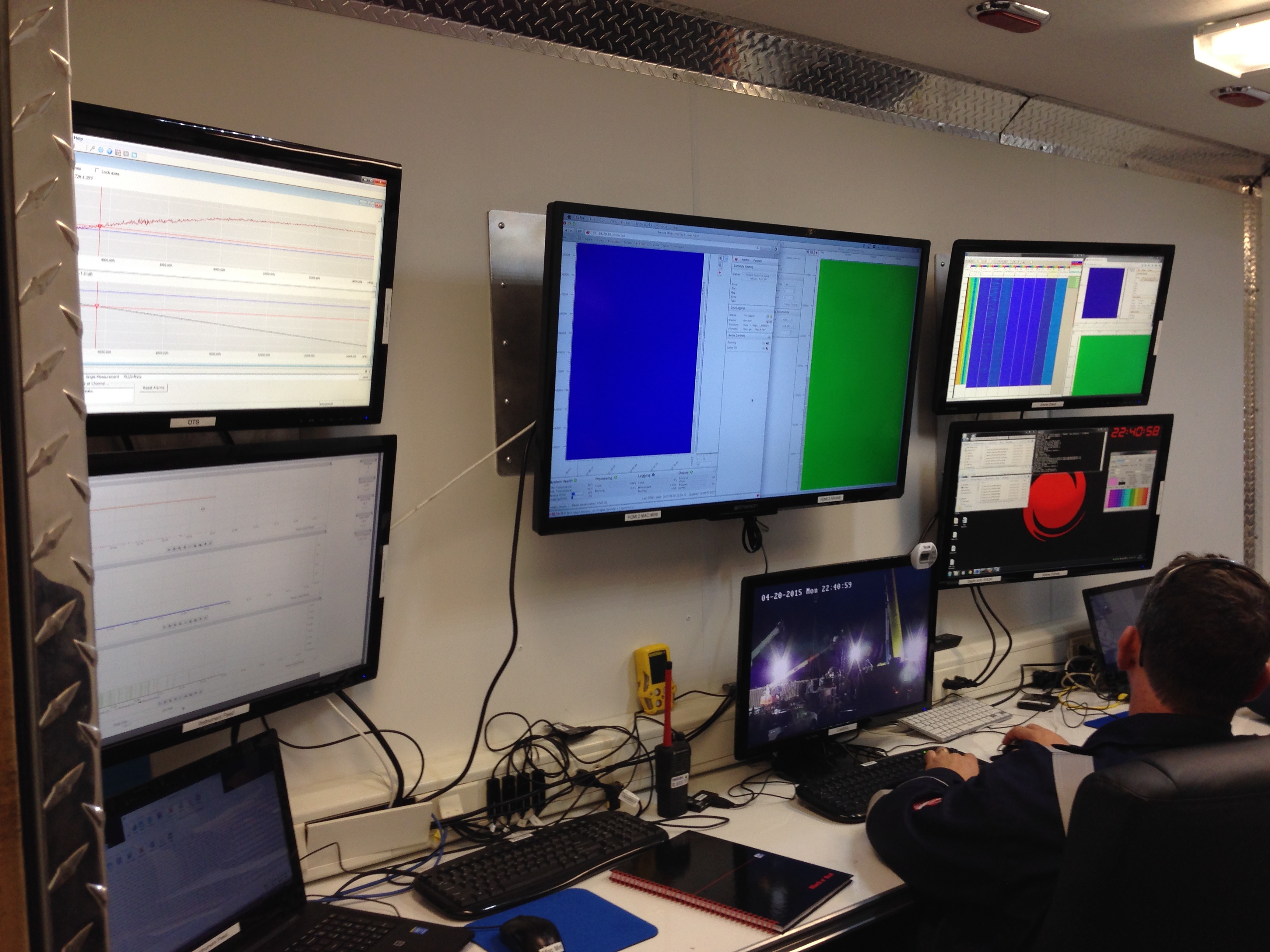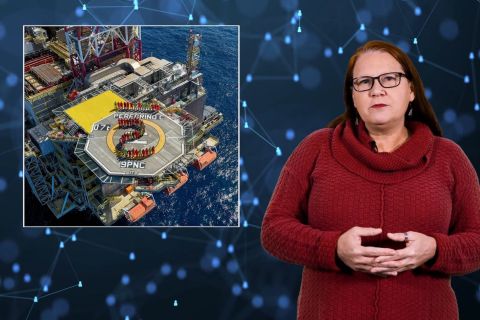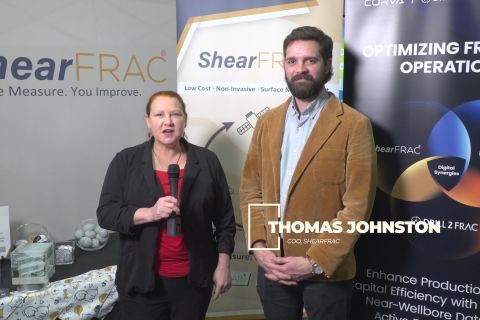Conversations about the falling oil prices are dominating the industry, and with experts predicting that this decline could continue for at least a decade, operators are more focused than ever on improving production efficiency in unconventional plays.
It has been forecast that on average only 8% of a reservoir’s oil is being recovered from shale wells, and many do not produce at every frack stage. This means that as the cost per barrel plummets, an increasing number of wells are simply not economically justifiable. As such, a crucial priority for operators moving forward is to reduce the breakeven point on every well while maximizing recovery rates.
Hydraulic fracturing is fundamentally difficult to monitor and, until recently, well engineers have had limited visibility of the process. This has resulted in an ongoing ambiguity around various subsurface parameters, including cluster contribution, interference remediation and fracture propagation geometry. To overcome this challenge, operators need actionable and precise real-time data that give them an oversight of fundamental frack processes to ensure that operations are being carried out as safely as they can be as well as allowing engineers to react quickly and efficiently should any downhole issues arise.
As a result, there is growing adoption and implementation of the new sensing technologies that can monitor completion and production processes. The distributed acoustic sensor (DAS) is one such technology that adds a new layer of intelligence to the fracking procedure. In conjunction with distributed temperature sensors and microseismic monitoring, the technology provides operators with a multidimensional understanding of well conditions and, most importantly, they remove the guesswork
from downhole operations.
Fundamentally, by informing and accelerating the decision-making process with real-time insights, DAS reduces the production cost for each well and ensures that fracking provides a financially viable and sustainable source of energy amid uncertain market conditions.
How does DAS work?
A DAS is a ground-based interrogator unit of light backscatter. By sending pulses of light along fiber-optic cable, normally many thousands of pulses a second, the DAS continually receives a small amount of that light in the form of backscatter. When sound and vibrations disturb the casing of the fiber, the characteristics of that backscatter are changed. The DAS interrogates the backscatter for those changes to identify and locate the disturbance.
The DAS can be deployed onto new wells or fitted retrospectively onto existing ones through intervention methods such as slickline, coiled tubing or wireline. Here the acoustic disturbance at each point along the fiber allows engineers to “visualize” and record what is going on downhole in real time.
Importantly, the DAS not only allows changes to an operation to be made in real time, but it also provides backdated information of the well’s performance over a longer period of time that engineers can analyze and use to optimize future fracks. The data that the DAS delivers are a fundamental tool for operators if they are to wholly understand well integrity and the completion and production stages.

Enhancing the frack procedure
The DAS adds value to the frack procedure from the very beginning of the operation, starting with monitoring the wireline logging equipment that is fitted into the well. For example, the DAS can reassure well engineers that the devices to set the packers are on depth, the perforating guns fire as they are supposed to and, in a traditional plug-and-perf operation, the fracture ball is seated correctly.
By delivering a live record of the operation, the DAS provides engineers with more clarity than before and gives a clear signal of a successful frack in the exposed formation. A key challenge for well engineers is deciding how much pressure to pump into the frack and optimizing pumping application.
This is a delicate procedure since pumping too quickly and prematurely risks breaking the cement rather than penetrating the formation as it should. Moreover, errors in the pumping application could risk completely removing the fracture from the chosen formation, which creates huge losses of time and resource. The DAS plays a fundamental role in minimizing cement damage and keeping the frack within the right stage, essentially helping operators cooperate with the demands of the operation rather than working against them.
However, that’s not all. With an accuracy of 1 m to 2 m (3.3 ft to 6.6 ft), the DAS not only provides sophisticated insights throughout the operation to help engineers fully optimize the frack, but it also alerts operators of any downhole activities that need to be addressed. This could be where integrity issues such as a breakdown in the cement are causing cross-stage communication issues and opening up previously fracked stages to frack fluid. Of course, this subsequently results in a significant amount of wasted resource.
The DAS alerts operators as soon as these issues begin, allowing them to make adjustments in real time and continue an efficient operation. This is one area where the DAS is particularly valuable since it minimizes the amount of proppant and water needed for each frack operation and therefore significantly lowers the production costs for each well.

Analysis process
While real-time monitoring tools are important to optimize frack operations immediately, operators also are looking at ways to maximize production at each well site. To this end, there is an increased interest in the industry about refracking existing wells. However, as the process remains an intricate and complicated one, technologies such as the DAS are essential since the risks of leaks and cracks in the cement are much more common in refrack operations. As a result, operators need clear visibility of whether refracks are necessary or if wells are producing optimally already.
Fotech’s Helios DAS system provides a comprehensive data report within half an hour of completing a frack stage, giving engineers real-time information on how much sand and fluid each zone is taking. This enables operators to incrementally enhance the production of each stage to ensure each well is achieving its maximum potential.
The data collected by the DAS over a series of operations can be used by engineers to determine operational inefficiencies and identify where changes can be made to improve future operations. Beyond this, it is also possible to gain a new insight into flow profiles and reservoir response to surface operations by comparing acoustic and distributed temperature data over a prolonged period of time. Any detected anomalies will pinpoint operational issues that can then be quickly identified, located and addressed.
As market conditions remain unpredictable, investment in surveillance technologies such as the DAS are essential to maximize production and identify operating problems quickly and effectively. The real-time insights that the DAS provides are crucial at a time when margins are squeezed, production efficiency is more important than ever and operators need to capitalize on the tools available to them to ensure a brighter future for the oil and gas industry.
Recommended Reading
Well Logging Could Get a Makeover
2024-02-27 - Aramco’s KASHF robot, expected to deploy in 2025, will be able to operate in both vertical and horizontal segments of wellbores.
Tech Trends: SLB's Autonomous Tech Used for Drilling Operations
2024-02-06 - SLB says autonomous drilling operations increased ROP at a deepwater field offshore Brazil by 60% over the course of a five-well program.
E&P Highlights: March 15, 2024
2024-03-15 - Here’s a roundup of the latest E&P headlines, including a new discovery and offshore contract awards.
ShearFRAC, Drill2Frac, Corva Collaborating on Fracs
2024-03-05 - Collaboration aims to standardize decision-making for frac operations.
E&P Highlights: March 4, 2024
2024-03-04 - Here’s a roundup of the latest E&P headlines, including a reserves update and new contract awards.





